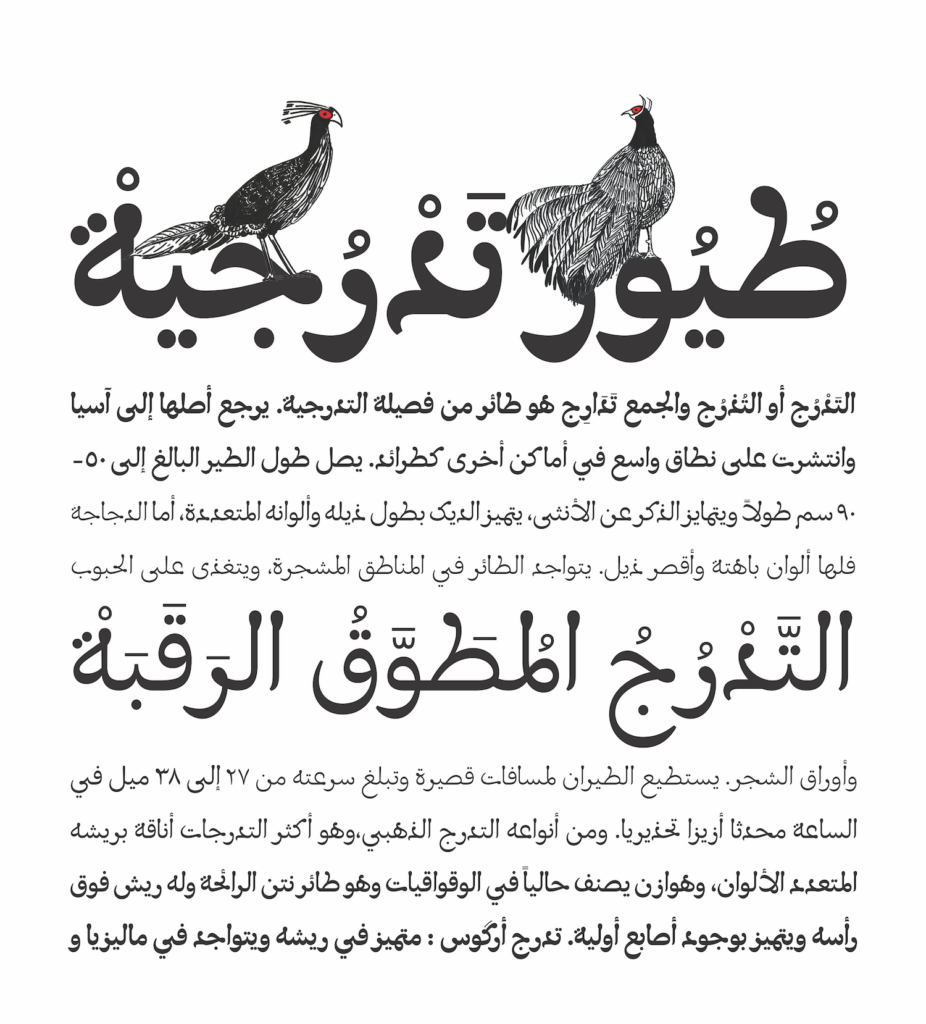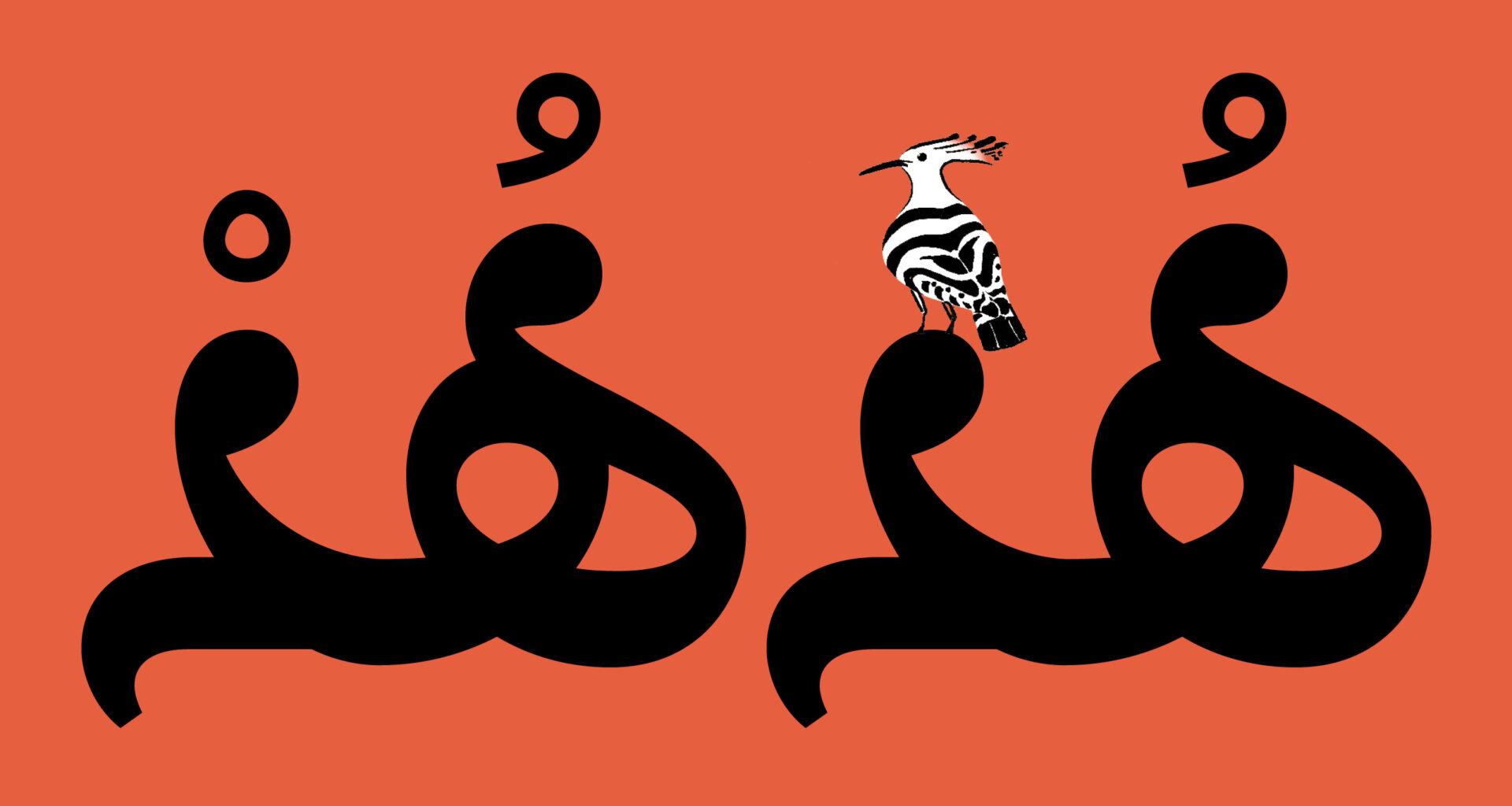Derived from the Arabic word for ‘Hoopoe’, a fascinating bird known for its distinct black dotted crown of feathers and striking graphic patterns on its wings and tail, Hudhud by Maha Akl reflects the essence of its namesake through its visually captivating design. The typeface first emerged during the Arabic Type Design Beirut in 2016 and underwent meticulous development under the guidance of Kristyan Sarkis until its publication by TPTQ Arabic. The recognition it garnered, including the esteemed certificate of excellence in type design from the Type Directors Club in 2020, further solidifies Hudhud's significance in the field.
In this interview, we’ll explore Maha Akl's journey as a graphic designer, her dedication to bridging Arabic type design and illustration, and the intricate process behind the creation of her debut typeface, Hudhud. Join us as we uncover the cultural and artistic influences that shaped Maha's work, and gain insights into the significance of Hudhud within the realm of Arabic typography.

(Marsya A. Abdulghani): How did your experience at VCUarts Qatar shape your aspirations as a graphic designer specializing in Arabic type design and illustration?
(Maha Akl): As an Arab student in a Western-centric education system, I felt the need to bring back my own culture and the authenticity to what I do. Though bilingual design was not a requirement, I took it upon myself to produce work in both Arabic and English in almost every assignment. As many designers felt at the time, I have always struggled to find good Arabic typefaces that looked modern and were of a high quality. Hence, using Arabic almost compromised the quality of the design. Luckily, I signed up for the Arabic type design elective taught by Basma Hamdy who also founded TypeAraby, which is dedicated to preservation and evolution of Arabic typography and type-design. Having the thought that I could contribute to enriching the Arabic typeface library was thrilling to me, and it kick started my career.
(M.A.A): After completing your degree at VCUarts Qatar, what steps did you take to further refine your skills and pursue your passion for Arabic type design and illustration?
(M.A): I had already completed one typeface in the Arabic type design elective at VCUarts Qatar and I continued perfecting it. I joined an intensive course in Arabic type design in Beirut ATDB. The program that was a game changer for me. It opened so many doors regarding design and how to use the original script and traditional styles in a very systematic manner to produce authentic typography.
(M.A.A): How did you ensure that Hudhud maintains a balance between being whimsical and practical? Were there any specific design considerations or challenges that you encountered during the creation process?
(M.A): My main focus of designing ‘Hudhud’ was to create a font that is charming and fun. At first, I didn’t want to limit myself in thinking practical, and that really pushed it to the extreme. As I kept refining the result, I learned that I had to let go of some over the top designs and adhere to the type system rules to balance it. Lastly, I incorporated some Naskh features to make it more familiar to a wider audience, but the main feel and charm came from the Maghribi style.

(M.A.A): How has the reception been for Hudhud since its publication? Have you witnessed interesting use cases for the typeface?
(M.A): The reactions I received so far were absolutely thrilling and overwhelming. I was hoping to see it used more in children’s books as it was my initial vision for it but I’ve seen it in posters mostly. However, my favorite use of ‘Hudhud’ so far has to be on a customized Libyan Arabic physical keyboard in the link below: Custom Libyan keyboard
(M.A.A): What does it take to succeed in a niche like typography and how do you measure your success?
(M.A): To me, success lies in the authenticity of my contributions to the existing Arabic type design library. This discipline is truly thrilling, given the multitude of unexplored realms it offers. My gauge of achievement is determined by the extent to which I have gone through into these uncharted territories.
Images courtesy of Maha Akl







